10 Short Moral Stories for Kids
1. The Ant and the Grasshopper
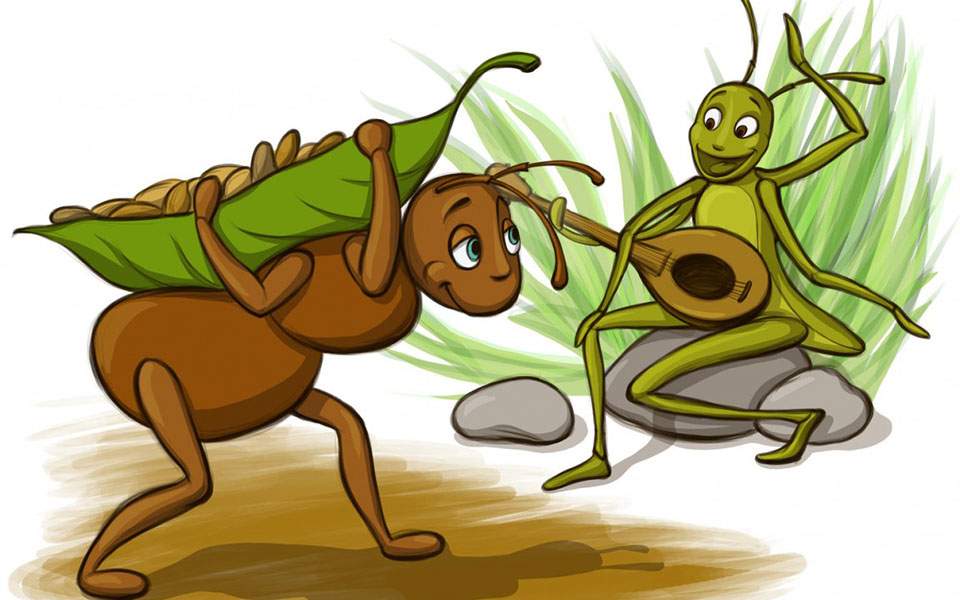
Once upon a time, in a sunny meadow, there lived an ant and a grasshopper. The ant was a hard worker, always busy gathering and storing food for the winter, while the grasshopper loved to sing and play all day long, without a care in the world.
One day, the ant was busy carrying a kernel of corn back to his nest, when the grasshopper saw him and stopped to ask, “Why are you working so hard on this beautiful day? Come and play with me instead!”
The ant replied, “I cannot play, for I must prepare for the winter when food will be scarce. But why don’t you help me gather some food, so we can both be ready for the cold months ahead?”
But the grasshopper only laughed and said, “Why should I waste my time gathering food? There is plenty to eat now, and besides, the winter is still far away. Let’s enjoy the sunshine and the music!”
So the ant continued to work hard all summer, while the grasshopper continued to play and sing. But when the winter came, the grasshopper found himself cold, hungry and miserable, with no food to sustain him. He remembered the ant and how he had warned him to prepare for the winter, and felt ashamed for his foolishness.
Desperate and hungry, the grasshopper went to the ant’s nest and begged for help. The ant, who had plenty of food stored, took pity on the grasshopper and offered him some of his provisions.
The grasshopper, humbled by his predicament, thanked the ant and promised to never again be lazy and unprepared. From then on, the grasshopper worked hard alongside the ant, and they both lived happily ever after.
The story of the ant and the grasshopper serves as a reminder that hard work and planning are essential for long-term survival, and that those who neglect these virtues will suffer the consequences of their actions.
2. The Boy Who Cried Wolf
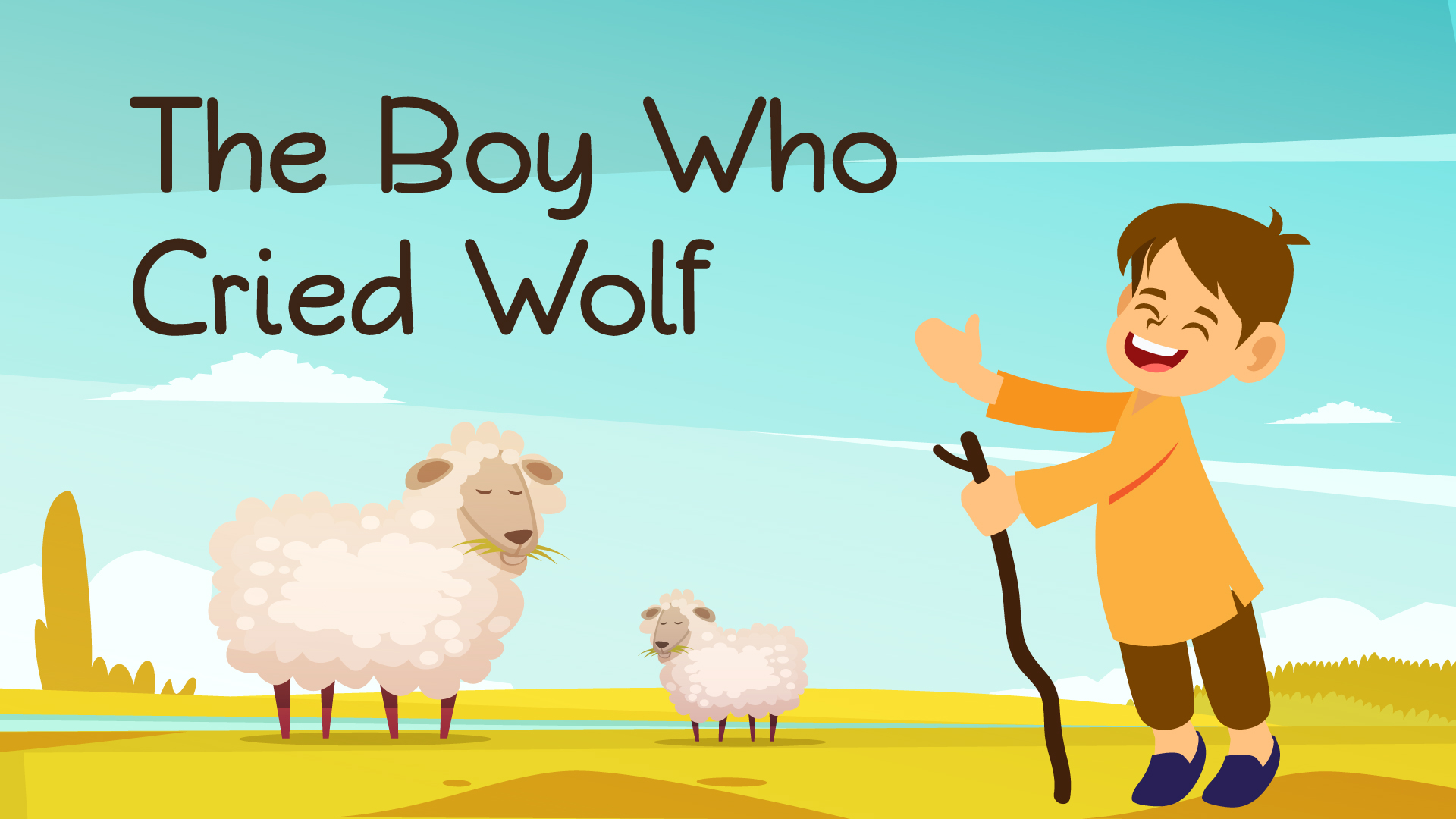
The boy ran to the village shouting, “Wolf! Wolf! There’s a wolf in the fields, come quickly!” The villagers heard his cries and came running to his aid, but when they arrived, they found no wolf. The boy laughed and thought it was a great joke.
The next day, the boy did the same thing. He cried out, “Wolf! Wolf! Help! There’s a wolf in the fields!” Again, the villagers came running to help, only to find out that it was another false alarm.
The third day, a wolf actually came into the field. The boy, who saw the wolf, was frightened and cried out, “Wolf! Wolf! Please, come and help me!” But no one came. The villagers, tired of being fooled by the boy’s false alarms, assumed it was another prank and decided not to come to his aid. The wolf attacked the boy and the sheep, causing great harm.
The story of the boy who cried wolf teaches us that lying and deceiving others, even for a seemingly harmless joke, can have serious consequences. When we repeatedly tell falsehoods, we lose the trust and respect of others. In the end, when we really need help, no one will believe us, and we will suffer the consequences of our actions.
So the lesson is to always tell the truth, be honest and responsible, and think carefully before making a joke or playing a prank. It is important to always remember that words have power, and that our actions have consequences, both for ourselves and for others.
3. The Tortoise and the Hare
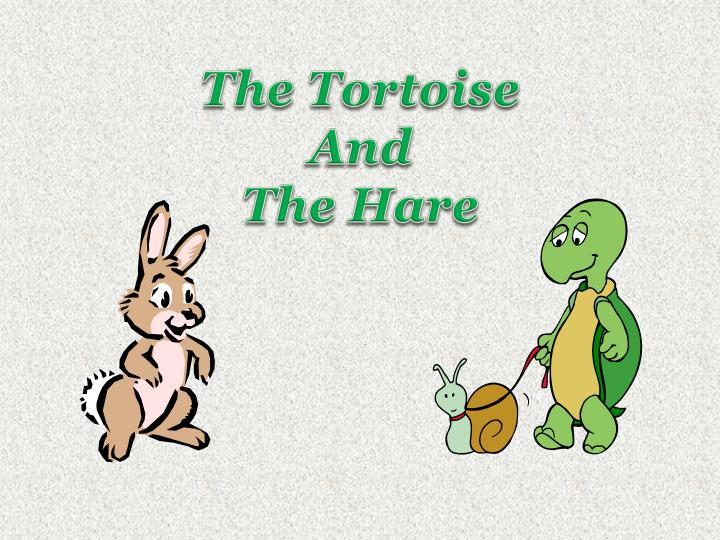
Once upon a time, in a forest, there lived a hare who was known for his incredible speed. He boasted to everyone that he was the fastest animal in the forest and that no one could beat him in a race. One day, a tortoise heard about the hare’s claims and challenged him to a race.
The hare laughed and said, “Why would I race a slowpoke like you? I could run circles around you!” But the tortoise persisted, and the hare finally agreed to the race.
The day of the race arrived, and all the animals in the forest gathered to watch. The hare sprinted ahead, leaving the tortoise far behind. Confident of his victory, the hare stopped to take a nap midway through the race, thinking he had plenty of time to rest before the tortoise caught up.
Meanwhile, the tortoise slowly but steadily plodded along, never stopping or taking a break. And as the hare slept, the tortoise finally reached the finish line, winning the race.
When the hare woke up and saw that the tortoise had beaten him, he was shocked and embarrassed. He had underestimated the tortoise’s determination and focus, and realized that slow and steady can sometimes win the race.
The story of the tortoise and the hare teaches us that slow and steady progress, combined with determination and persistence, can lead to great success. It also warns us against overconfidence, arrogance, and underestimating our opponents, as that can often lead to failure and disappointment.
In the end, the hare learned a valuable lesson and never again boasted about his speed. And the tortoise became a hero in the forest, admired for his patience and determination.
4. The Lion and the Mouse

Once upon a time, in a forest, there lived a lion who was feared by all the other animals. One day, while the lion was sleeping, a tiny mouse accidentally ran over his tail. The lion woke up, roared in anger, and was about to eat the mouse.
The mouse begged for forgiveness and promised to help the lion someday if he let him go. The lion was amused at the idea of such a tiny creature helping him but he decided to spare the mouse’s life and let him go.
Some days later, the lion was caught in a hunter’s trap, and no matter how hard he tried, he couldn’t break free. The mouse happened to pass by and saw the lion in distress. The mouse remembered his promise and decided to help the lion.
He approached the lion and nibbled away at the ropes of the trap until the lion was finally free. The lion was amazed that such a small creature could help him and thanked the mouse.
The moral of the story is that even the smallest creatures can be of great help, and one should not judge someone’s worth by their size. The story also teaches us that kindness and compassion can lead to unexpected rewards and that it is always better to show mercy and spare someone’s life rather than being cruel and vengeful.
From that day on, the lion and the mouse became good friends, and the lion realized that he could rely on even the tiniest creatures in times of need.
5. The Honest Woodcutter

Once upon a time, in a small village, there lived a poor woodcutter who made his living by cutting wood from the forest. One day, while he was cutting a tree near a river, his axe slipped out of his hand and fell into the water. The woodcutter was sad because the axe was his only means of earning a living, and he could not afford to buy another one.
Feeling dejected, he sat by the river, staring at the water. Suddenly, a fairy appeared before him and asked him what was wrong. The woodcutter told the fairy about his lost axe and how he would have no means to support his family without it. The fairy took pity on him and dived into the river to retrieve the lost axe. She returned with not just one axe but two, one of gold and the other of silver, and asked the woodcutter which one was his.
The honest woodcutter said that the silver axe was his. The fairy was pleased with the woodcutter’s honesty and gave him all three axes as a reward. The woodcutter was overjoyed and thanked the fairy.
The next day, the woodcutter went to the forest to cut wood as usual, but he could not stop thinking about the fairy’s gift. He realized that the golden axe was worth much more than the silver one and could make him rich instantly. But he quickly dismissed the thought, knowing that he had promised the fairy that the silver axe was his own.
The news of the woodcutter’s good fortune soon spread throughout the village, and the king himself heard about it. The king summoned the woodcutter and asked him about his story. The woodcutter narrated the whole incident, and the king was impressed by his honesty and integrity.
The king realized that he had found a wise and honest man and offered him a job as his royal woodcutter. The woodcutter accepted the offer, and he and his family lived happily ever after, never forgetting the fairy’s lesson that honesty is the best policy.
The story of the honest woodcutter teaches us the importance of honesty and integrity in life. It shows that honesty may not always bring instant rewards, but it is a valuable trait that will earn us respect and trust in the long run.
6. The Goose, Golden Egg and Farmer

Once upon a time, there was a farmer who owned a goose that laid a golden egg every day. The farmer was very happy and became very rich selling the golden eggs. But as time passed, the farmer became greedy and wanted to get all the golden eggs at once. He thought that if he could get all the eggs at once, he could become richer much quicker.
So one day, the farmer decided to cut open the goose and get all the golden eggs inside it. But when he cut open the goose, he found nothing inside, and the goose died. The farmer was devastated and realized his mistake.
The farmer learned a valuable lesson that day, that greed leads to destruction, and one should be content with what they have. The moral of the story is that greed can destroy everything one has, and one should be happy with what they have and not be greedy for more.
The story of the goose that laid the golden eggs also teaches us that patience is a virtue. If the farmer had been patient and waited for the goose to lay its eggs one by one, he could have been much richer in the long run. But his impatience and greed caused him to lose everything.
The story is a reminder to all of us that we should be grateful for what we have and not always seek more. We should value and take care of what we have, and not let our greed lead us to destruction
7. The Cow Squad

Once upon a time, in a small village, there were three cows named Bessie, Daisy, and Clarabelle. They were the best of friends and always did everything together. One day, while they were grazing in the meadow, they overheard the farmer and his wife talking about selling one of them to a neighboring farm.
The cows were very upset and didn’t want to be separated from each other. They decided to form a squad to find a way to prevent the farmer from selling any of them. Bessie, the eldest and wisest cow, was the leader of the squad. Daisy, the youngest and most adventurous cow, was the scout, and Clarabelle, the strongest cow, was in charge of carrying out their plan.
They brainstormed and came up with a plan to convince the farmer that all of them were essential to the farm and that he shouldn’t sell any of them. The next day, when the farmer came to milk the cows, the Cow Squad put their plan into action.
Bessie spoke to the farmer, “Dear farmer, we have been your loyal cows for so many years, and we have given you so much milk. We have always been good and obedient cows. Please don’t sell any of us.”
Daisy chimed in, “Yes, Mr. Farmer, we love each other so much, and we can’t imagine being apart. Please don’t sell any of us.”
Clarabelle added, “And you know how strong I am, Mr. Farmer. I can do so much work for you. You need me.”
The farmer was touched by their words and realized how much he depended on all three cows. He decided not to sell any of them and was happy to have such wonderful cows on his farm. The Cow Squad was overjoyed and mooed in happiness.
From that day on, the Cow Squad continued to work together and became even closer friends. They were grateful for their friendship and knew that they would always be there for each other.
The story of the Cow Squad teaches us the importance of friendship and teamwork. It shows that when we work together, we can achieve anything we want, and we can overcome any obstacle. The story also reminds us that we should appreciate our friends and be there for them in times of need.
8. The Fox and The Grapes
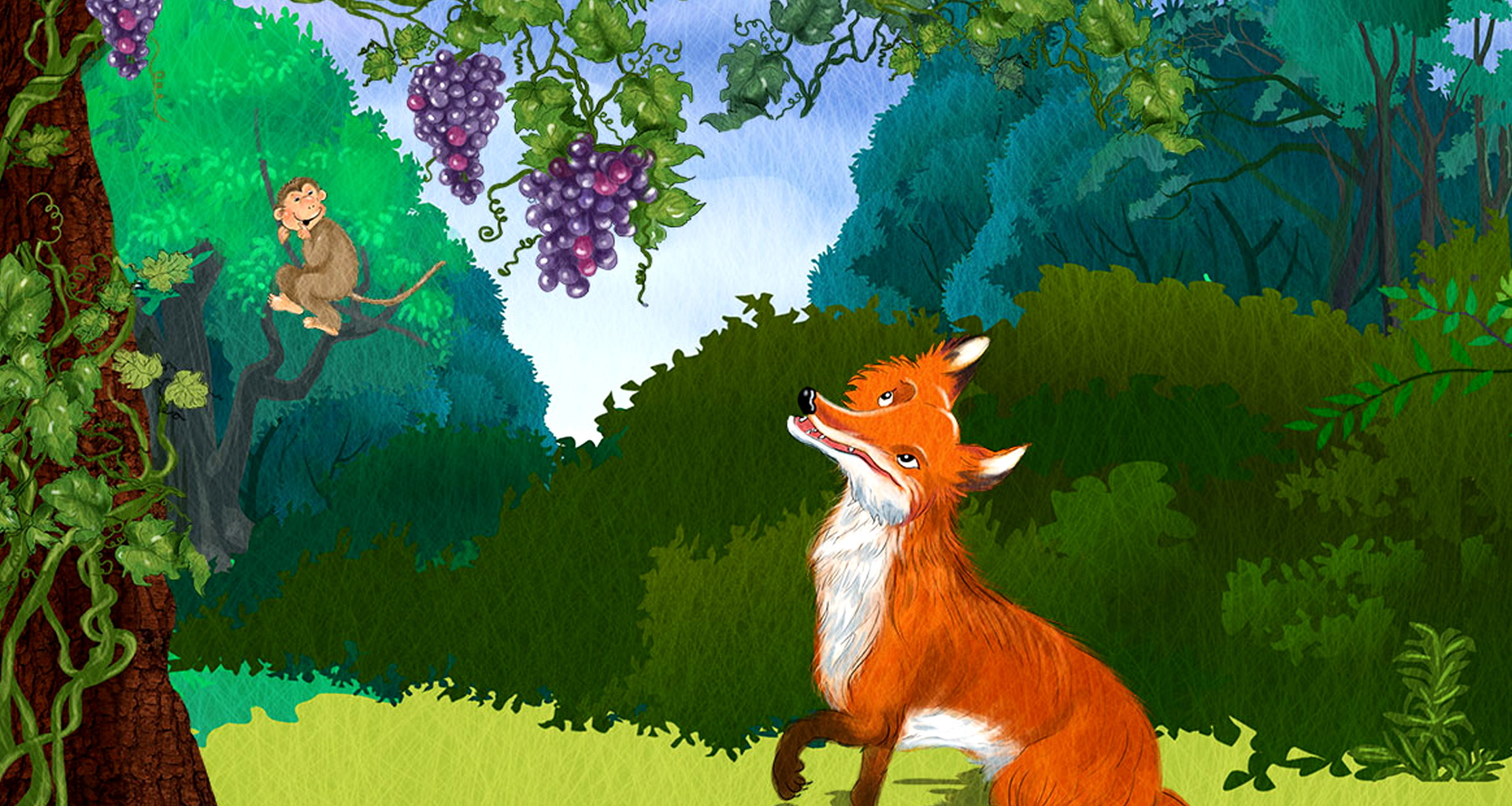
One sunny day, a fox was walking through a vineyard when he saw some beautiful bunches of grapes hanging from a vine. The fox’s mouth started watering as he looked up at the grapes, and he decided he had to have them.
The fox jumped high in the air to try to grab the grapes, but they were too high. He tried again and again, but every time he failed, and the grapes remained out of his reach. Finally, exhausted and frustrated, the fox gave up and walked away.
As he walked away, the fox tried to convince himself that he didn’t really want the grapes, that they were probably sour and not worth the effort. He muttered to himself, “Those grapes are probably sour anyway, and I don’t want them.”
The moral of the story is that people often tend to belittle what they can’t have. This is known as sour grapes syndrome. When we desire something but can’t have it, we tend to reject it, convincing ourselves that it is not worth having. The fox in the story convinced himself that the grapes were sour and not worth having because he couldn’t reach them. He made himself believe that he didn’t want them anyway, just to feel better about his failure.
The story of the Fox and the Grapes teaches us that we should never belittle something we can’t have just because we can’t have it. It’s important to accept our limitations and not give up easily. Instead of giving up, we should try harder and persevere until we achieve our goals. We should never let our failures or shortcomings dictate our attitude towards something we desire.
9. The Wolf and The Shepherds
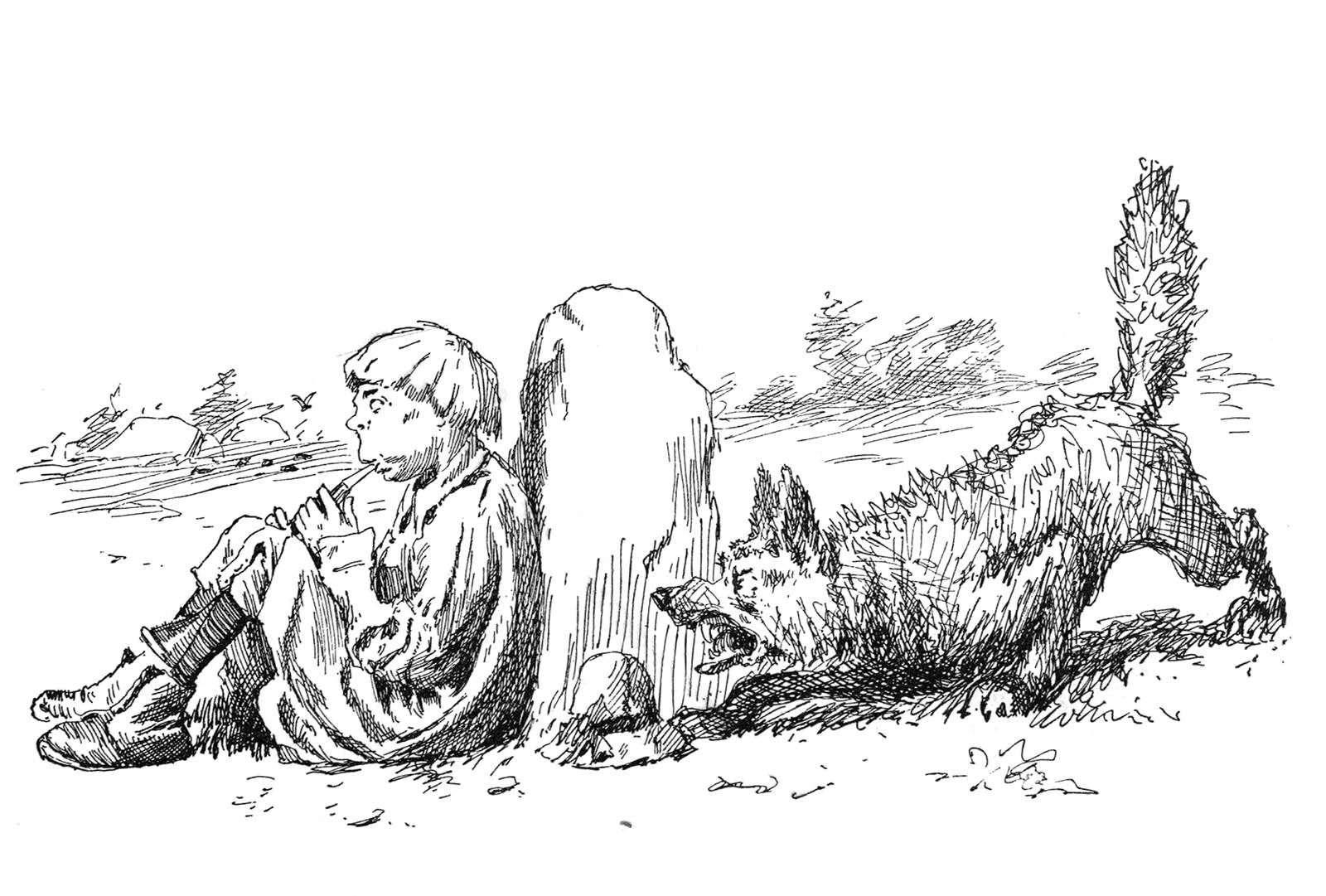
Once upon a time, a hungry wolf was wandering through the forest in search of food. He had not eaten for days and was weak and desperate. As he was wandering, he spotted a group of shepherds tending to their sheep in a nearby field.
The wolf had an idea. He thought he could scare the shepherds and steal one of their sheep for his meal. The wolf came up with a plan and began to stalk the shepherds. He crept up behind them and started howling loudly.
The shepherds, taken by surprise, quickly realized that there was a wolf in the field. They immediately picked up their weapons and started running towards the howling wolf, ready to defend their sheep.
The wolf realized that his plan had failed, and he began to run away as fast as he could. But he was not fast enough, and one of the shepherds managed to hit him with a stick. The wolf fell to the ground, injured and unable to move.
The shepherds, thinking that the wolf was dead, walked away. The wolf, however, was not dead, and as soon as the shepherds were out of sight, he got up and started to run again. But the wolf’s injuries were too severe, and he was unable to keep running.
As he lay there, injured and helpless, the wolf realized that his plan to scare and steal from the shepherds had been a mistake. He wished he had not been so greedy and had instead hunted for food in an honest way.
The story of the Wolf and the Shepherds teaches us the importance of being honest and the consequences of greed. The wolf’s greed and dishonesty led him to a disastrous end. We should always strive to be honest in our actions and not let our greed and desire for things cloud our judgement.
10. Controlling Anger

Once upon a time, there was a young boy who had a terrible temper. He would get angry over the smallest things and would often lash out at his family and friends. One day, his father decided to teach him a valuable lesson about controlling anger.
The boy’s father took him to the nearby forest and handed him a hammer and a bag of nails. He told the boy to go around the forest and hammer a nail into every tree he saw.
The boy did as he was told and spent the whole day hammering nails into trees. When he came back, his father asked him to remove all the nails from the trees.
The boy quickly realized how difficult it was to remove the nails. Many of the nails were bent, and some of the trees were left with permanent scars.
His father then told him, “The nails are like your anger. They can hurt people and leave scars. Once you say something hurtful or do something wrong, it cannot be easily undone. It is important to control your anger and avoid hurting others.”
The boy learned a valuable lesson that day. He realized that his anger could hurt others, and the scars could remain for a long time. From that day on, he made a conscious effort to control his anger and not let it get the better of him.
The story of the boy and the nails teaches us the importance of controlling our anger. We must learn to control our emotions and avoid hurting others with our words and actions. Just like the nails in the trees, our anger can leave permanent scars on the people we care about. We should always think before we speak and act, and try to be kind and considerate to those around us.
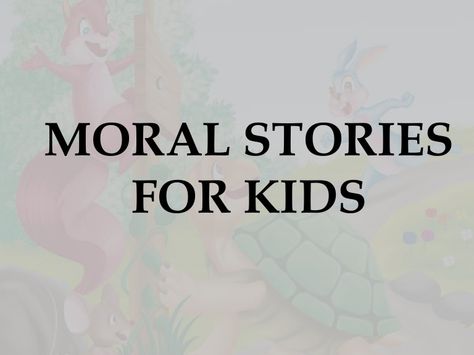
1 thought on “10 Touching Moral Stories for Children”